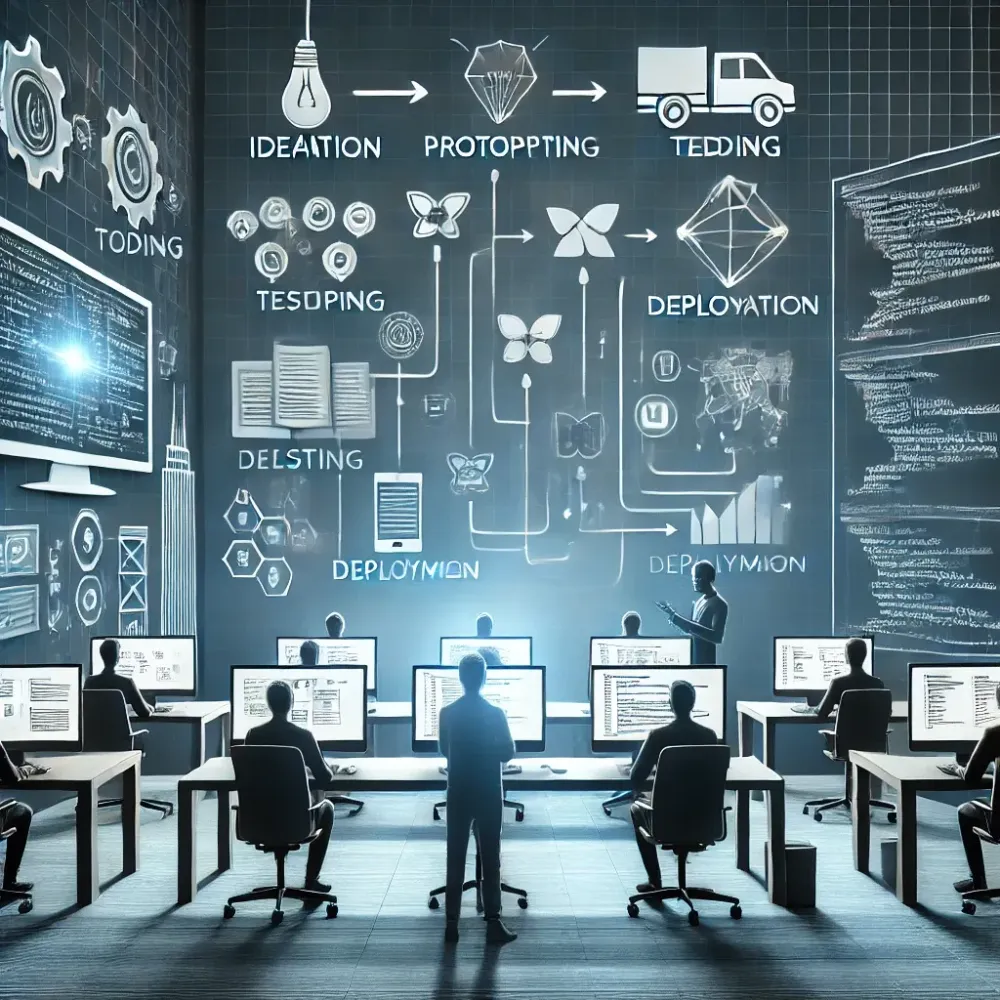End-to-End Development: Creating Solutions That Matter
- common.posted-on 30/11/2024

Creating impactful applications requires more than just technical expertise. It demands a holistic approach, where developers take ownership of every stage of the process, from ideation to deployment and beyond. This is where end-to-end development shines.
In this article, we’ll explore what end-to-end development means, its benefits, and the methodologies that ensure successful execution. We’ll also delve into real-world examples, highlighting best practices that make solutions truly matter to users.
What is End-to-End Development?
End-to-end development refers to the complete lifecycle of creating an application or system, starting from understanding user needs and ideation to implementation, testing, deployment, and maintenance. It’s a comprehensive approach where developers are involved in every step, ensuring the product aligns with its intended purpose.
This method differs from traditional segmented workflows, where different teams handle specific tasks. Instead, an end-to-end approach promotes a seamless integration of all stages, allowing developers to maintain a unified vision for the project.
Why End-to-End Development Matters
Adopting an end-to-end development approach offers numerous benefits:
- Consistency: A unified approach minimizes the risk of miscommunication and ensures consistency across the product lifecycle.
- User-Centric Design: Developers can better align technical solutions with user needs when they’re involved from the start.
- Faster Time-to-Market: With fewer handovers and a streamlined process, projects are often delivered faster.
- Quality Assurance: Developers gain a deeper understanding of potential pitfalls, ensuring robust and scalable solutions.
Key Steps in End-to-End Development
Let’s break down the key stages in the end-to-end development process:
1. Ideation and Research
Every impactful solution begins with a clear understanding of the problem it aims to solve. This stage involves:
- Conducting user research to identify pain points.
- Analyzing market trends and competitors.
- Brainstorming ideas and validating them with stakeholders.
2. Planning and Prototyping
Once the idea is clear, developers move to the planning phase, where the architecture, technology stack, and timeline are defined. Prototyping plays a critical role here:
- Low-fidelity prototypes help visualize the core functionality.
- High-fidelity prototypes offer a near-real experience for stakeholders and users.
3. Development
This stage involves actual coding and implementation. Best practices include:
- Following agile methodologies to adapt to changes.
- Writing clean, maintainable code with proper documentation.
- Regularly integrating and testing features to ensure stability.
4. Testing
Quality assurance is a critical step in the development lifecycle. Testing should cover:
- Functional testing to ensure features work as intended.
- Performance testing to measure responsiveness and scalability.
- Security testing to safeguard against vulnerabilities.
5. Deployment
Once the application is thoroughly tested, it’s deployed to the production environment. This involves:
- Configuring servers and databases for optimal performance.
- Setting up CI/CD pipelines for continuous delivery.
- Monitoring the application post-launch to address issues quickly.
6. Maintenance and Updates
End-to-end development doesn’t stop at deployment. Regular updates, performance monitoring, and user feedback integration are essential to ensure long-term success.
Real-World Examples
Let’s look at a few examples that demonstrate the power of end-to-end development:
1. Cross-Platform Apps
Using Flutter, developers can create apps that work seamlessly on both iOS and Android. By leveraging a single codebase, they ensure consistency across platforms while reducing development time.
2. Scalable Web Applications
Building dynamic web apps with frameworks like Vue.js or React allows developers to scale solutions easily. Integrating RESTful APIs or GraphQL ensures robust data handling for complex user interactions.
Challenges in End-to-End Development
While the benefits are immense, end-to-end development has its challenges:
- Balancing user needs with technical feasibility.
- Managing scope creep and ensuring clear communication with stakeholders.
- Keeping up with rapidly evolving technologies.
Finally, End-to-End development is more than just a process; it’s a mindset that puts users and quality at the forefront. By owning every stage of the product lifecycle, developers can create solutions that not only work but truly matter.
Whether you’re working on a mobile app, a web platform, or an integrated system, adopting an end-to-end approach ensures you deliver value and impact in every project.
